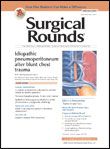Publication
Article
Living Donor Liver Transplant Recipients Have Decreased Diabetes Risk
Author(s):
New-onset diabetes mellitus incidence is lower in living donor liver transplant (LDLT) recipients than in deceased donor liver transplant (DDLT) recipients.

Between 10% and 36% of liver transplant recipients develop new-onset diabetes mellitus after transplantation (NODAT). Most literature describes NODAT’s prevalence and risk factors in patients who received organs from deceased donors. However, transplants involving livers from living donors are more common, due to the ongoing shortage of cadaveric livers for patients awaiting transplant.
Though the incidence and predictors of NODAT in patients who receive organs from living donors is unclear, limited data suggests a lower risk of NODAT among living donor liver transplant (LDLT) recipients, possibly due to favorable recipient and donor characteristics such as younger donor age and lower recipient body mass index (BMI).
A new study conducted by researchers at the Mayo Clinic Hospital in Phoenix compared the incidence and risk factors for NODAT in 902 LDLT recipients to 19,582 deceased donor liver transplant (DDLT) recipients. The authors drew data from a large national database to assess NODAT incidence over a period of 5 years after liver transplantation.
Like the few studies that previously examined the issue, this study demonstrated that the risk of NODAT was lower in LDLT recipients than in DDLT recipients. One year after liver transplantation, NODAT incidence was 7.4% in LDLT recipients, but 12.5% among DDLT recipients.
Over time, NODAT incidence decreased in LDLT recipients, falling from approximately 5% in the first year to less than 2% within 5 years. The researchers suggested that the decline was related to decreased use of maintenance immunosuppression.
In both patient groups, the incidence of NODAT was high in the first 6 months following liver transplantation, which indicated that early intervention might prevent its development. The researchers also discovered that hepatitis C virus (HCV) liver disease and treated acute cellular rejection events were significant risk factors in LDLT recipients.
Although the study had some limitations — including potential reporting error in the database, lack of diagnostic criteria, and heterogeneous treatment protocols — its large patient pool gave credence to the findings.






